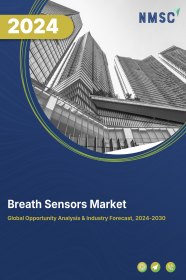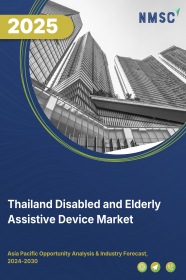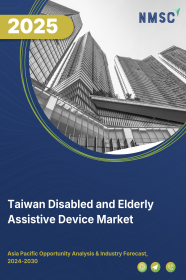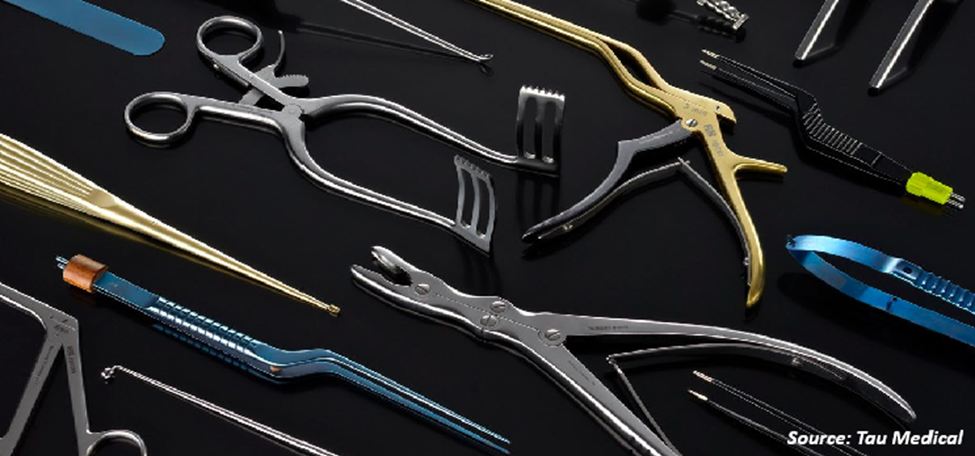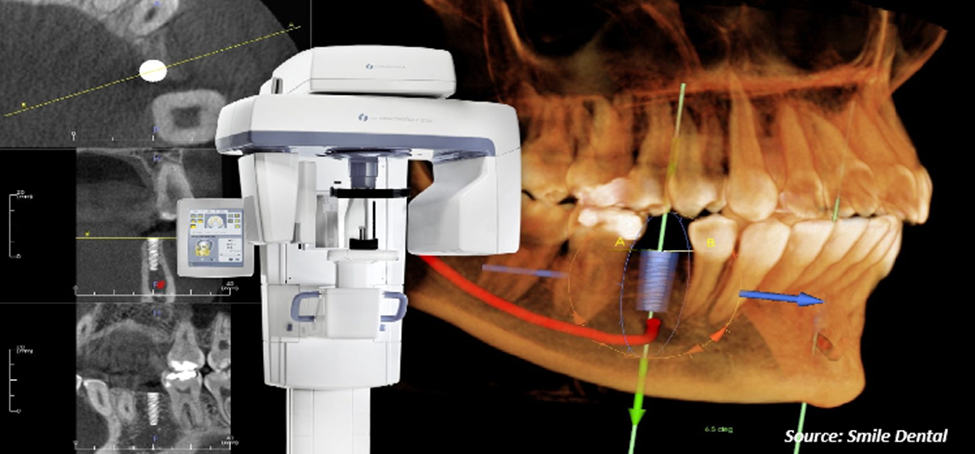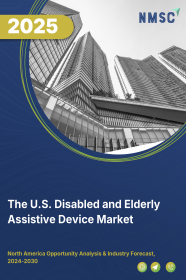
The U.S. Disabled and Elderly Assistive Device Market by Type (Mobility Impairments, Hearing Impairments, Visual Impairments, Cognitive Impairments, and Self-Care), and by End User (Hospitals, Elderly Nursing Homes, Home Care, and Other End Users) – Opportunity Analysis and Industry Forecast, 2024 – 2030
Industry: Healthcare | Publish Date: 02-Oct-2024 | No of Pages: 120 | No. of Tables: 87 | No. of Figures: 52 | Format: PDF | Report Code : HC1068
The U.S. Disabled & Elderly Assistive Device Market Overview
The U.S. Disabled & Elderly Assistive Device Market size was valued at USD 4 billion in 2023, and is predicted to reach USD 10.97 billion by 2030, at a CAGR of 14.4% from 2024 to 2030.
The disabled & elderly assistive device market refers to a market with wide range of products and services designed to support the aging population and individuals with disabilities in maintaining their autonomy and improving their quality of life. This sector covers medical furniture, hearing aids, mobility aids and living aids, that are crucial for managing chronic conditions and ensuring safety.
Innovations in these areas are driven by the need to address the growing challenges of an aging population and the diverse requirements of individuals with disabilities, making this market integral to enhancing accessibility and wellbeing.
This industry for mobility assistance for elderly is fueled by growing rate of disabled individuals, rapid technological advancements, and evolving regulatory landscapes. The assistive device industry further prioritizes inclusivity and continuously adapts to meet the ever-changing needs of its diverse user base.
Government Policies and Initiatives Boosts the U.S. Disabled & Elderly Assistive Device Market Growth
Government initiatives and policies in the U.S. play a pivotal role in driving the growth of the disabled & elderly assistive device market. Programs such as Medicare and Medicaid provide essential funding and reimbursement for various assistive devices, making them more accessible to the elderly and disabled. The Americans with Disabilities Act (ADA) mandates the availability of assistive devices in public spaces and workplaces, fostering independence and inclusion.
According to the Portulans Institute report 2023, the U.S. ranks 1st globally in the Governance pillar that includes regulatory quality, ICT regulatory environment, regulation of emerging devices, and others scoring 87.02 out of 100.
Additionally, the U.S. Food and Drug Administration (FDA) ensures that these health monitoring devices for seniors meet stringent safety and quality standards. These measures collectively support the U.S. disabled & elderly assistive device market growth by fostering innovation and improving the availability of assistive tools.
The Rising Patent Filings Propels Innovation and Expansion of the Market
The increasing number of patent filings is a significant catalyst for the U.S. disabled & elderly assistive device market expansion and innovation alongside technological progress. With a strong emphasis on research and development, there is a continual rise in patents across various sectors, including device, healthcare, and manufacturing. This uptick in patent activity fosters a competitive environment, driving companies to develop groundbreaking solutions and expand their product portfolios across the region.
According to the latest report published by World Intellectual Property Organization (WIPO), the U.S. filed the 2nd largest number of patent applications for assistive device from 1998 to 2019, totaling 25,897 filings. Specifically, they submitted 16,575 applications in mobility, 7,126 in hearing, 2,260 in vision, 735 in self-care, and 252 in cognition.
The robust intellectual property system in the U.S. not only safeguards inventions but also drives economic growth by attracting investments and facilitating the commercialization of new devices.
The Regulatory Challenges Associated with Assistive Devices in the U.S. Hinders the Growth of the Market
The U.S. disabled & elderly assistive device market trends significant regulatory challenges that restrain growth and innovation. Regulatory bodies such as the Food and Drug Administration (USFDA), and other national agencies impose stringent approval processes, requiring assistive products, especially medical devices, to undergo extensive testing and certification before entering the market. This ensures safety and efficacy but delays product launches and elevate costs significantly. These factors collectively pose substantial barriers, limiting the availability of assistive devices in the industry.
The Integration of AI into Assistive Devices is Expected to Create Ample Growth Opportunities for the Market
The integration of technology such as artificial intelligence (AI) and advanced sensors into disabled & elderly assistive devices represents a transformative leap towards a future where these devices are not only more advanced but also more personalized and accessible than ever before.
AI enables assistive devices to evolve beyond static solutions, becoming dynamic and adaptable to the specific needs of each user. Through machine learning algorithms, these devices learn from user interactions, continuously improving their functionality and responsiveness.
Competitive Landscape
The promising players operating in the U.S. disabled & elderly assistive device industry includes Invacare Corporation, Vispero, Stryker Corporation, Pride Mobility Products Corp., Starkey Hearing Technologies, GF Health Products, Inc., Medline Industries, Inc., Baxter, Drive DeVilbiss Healthcare, Thuasne, and others.
The U.S. Disabled & Elderly Assistive Device Market Key Segments
By Type
-
Mobility Impairments
-
Wheelchairs
-
Walkers and Rollators
-
Canes and Walking Sticks
-
Crutches
-
Portable Ramps
-
Others
-
-
Hearing Impairments
-
Hearing aids
-
FM System
-
Deafblind communicators for hearing
-
-
Visual Impairments
-
Screen readers
-
Optical magnifiers
-
Smart phones for vision
-
Braille writing equipment
-
Talking Devices
-
-
Cognitive Impairments
-
Self-Care
-
Shower Chairs
-
Grab-bars/handrails
-
By End User
-
Hospitals
-
Elderly Nursing Homes
-
Home Care
-
Other End Users
Key Players
-
Invacare Corporation
-
Vispero
-
Stryker Corporation
-
Pride Mobility Products Corp.
-
Starkey Hearing Technologies
-
GF Health Products, Inc.
-
Medline Industries, Inc.
-
Baxter
-
Drive DeVilbiss Healthcare
-
Thuasne
REPORT SCOPE AND SEGMENTATION:
|
Parameters |
Details |
|
Market Size Value in 2023 |
USD 4.00 billion |
|
Revenue Forecast in 2030 |
USD 10.97 billion |
|
Value Growth Rate |
CAGR of 14.4% from 2024 to 2030 |
|
Analysis Period |
2023–2030 |
|
Base Year Considered |
2023 |
|
Forecast Period |
2024–2030 |
|
Market Size Estimation |
Billion (USD) |
|
Growth Factors |
|
|
Companies Profiled |
10 |
|
Customization Scope |
Free customization (equivalent up to 80 working hours of analysts) after purchase. Addition or alteration to country, regional, and segment scope. |
|
Pricing and Purchase Options |
Avail customized purchase options to meet your exact research needs. |
















 Speak to Our Analyst
Speak to Our Analyst



